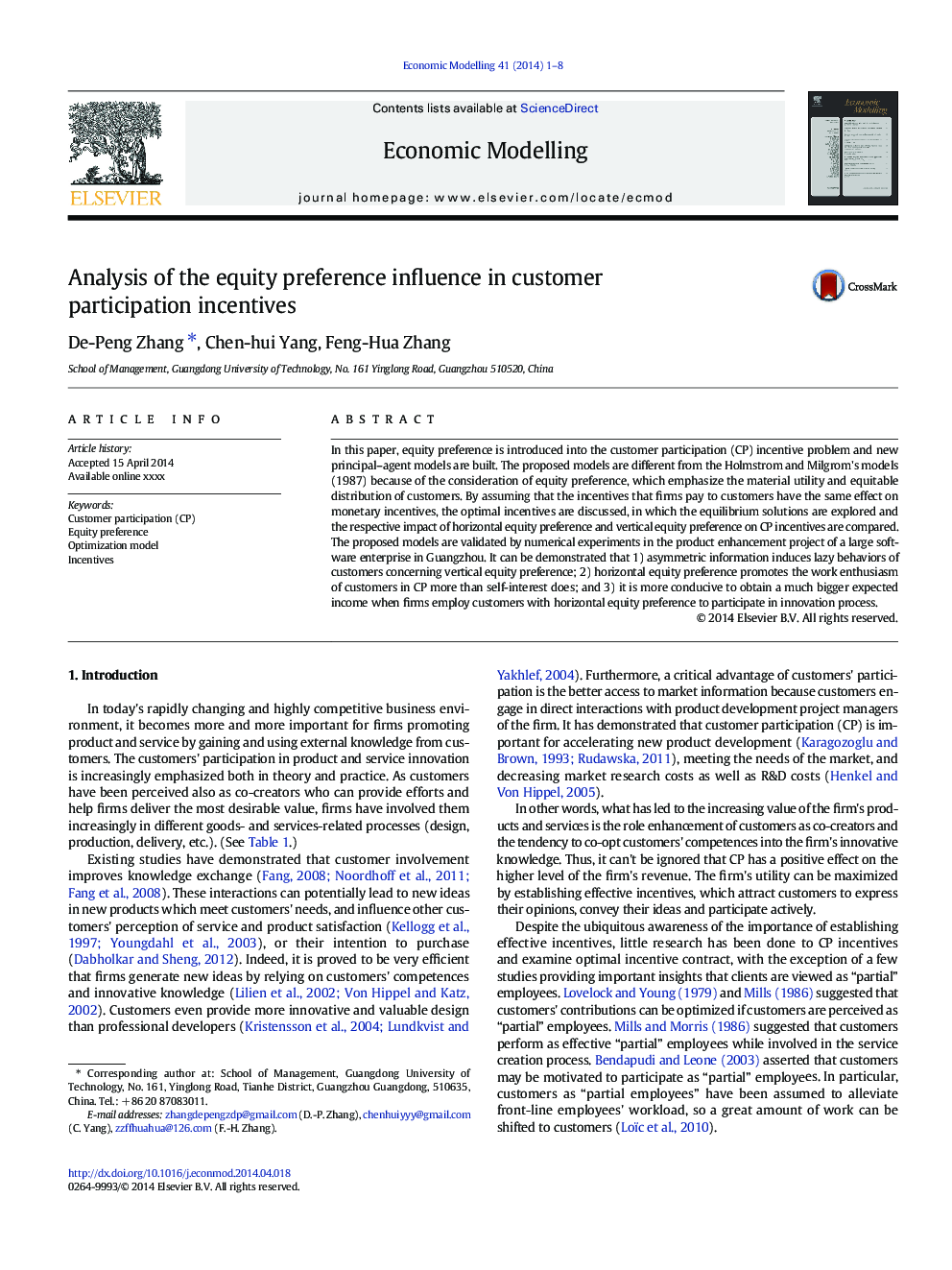| Article ID | Journal | Published Year | Pages | File Type |
|---|---|---|---|---|
| 5054108 | Economic Modelling | 2014 | 8 Pages |
Abstract
In this paper, equity preference is introduced into the customer participation (CP) incentive problem and new principal-agent models are built. The proposed models are different from the Holmstrom and Milgrom's models (1987) because of the consideration of equity preference, which emphasize the material utility and equitable distribution of customers. By assuming that the incentives that firms pay to customers have the same effect on monetary incentives, the optimal incentives are discussed, in which the equilibrium solutions are explored and the respective impact of horizontal equity preference and vertical equity preference on CP incentives are compared. The proposed models are validated by numerical experiments in the product enhancement project of a large software enterprise in Guangzhou. It can be demonstrated that 1) asymmetric information induces lazy behaviors of customers concerning vertical equity preference; 2) horizontal equity preference promotes the work enthusiasm of customers in CP more than self-interest does; and 3) it is more conducive to obtain a much bigger expected income when firms employ customers with horizontal equity preference to participate in innovation process.
Keywords
Related Topics
Social Sciences and Humanities
Economics, Econometrics and Finance
Economics and Econometrics
Authors
De-Peng Zhang, Chen-hui Yang, Feng-Hua Zhang,
